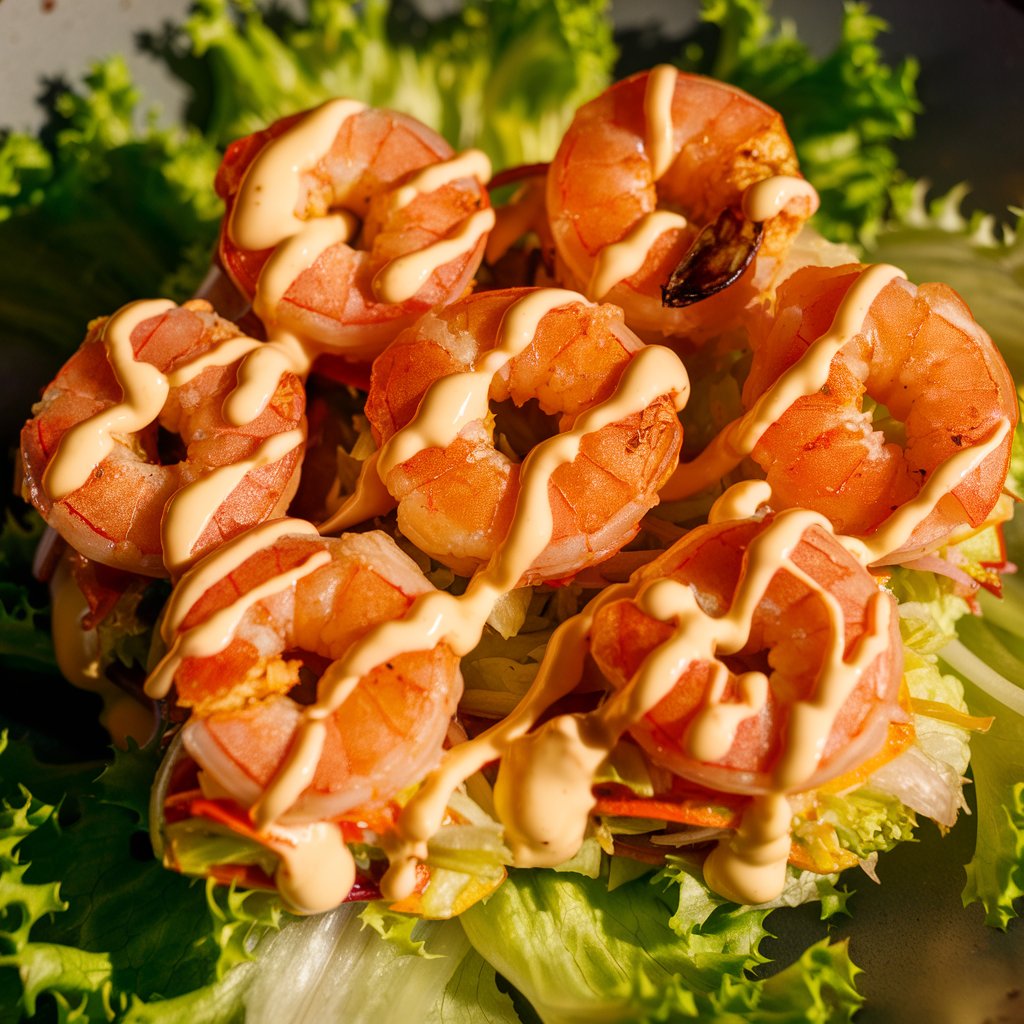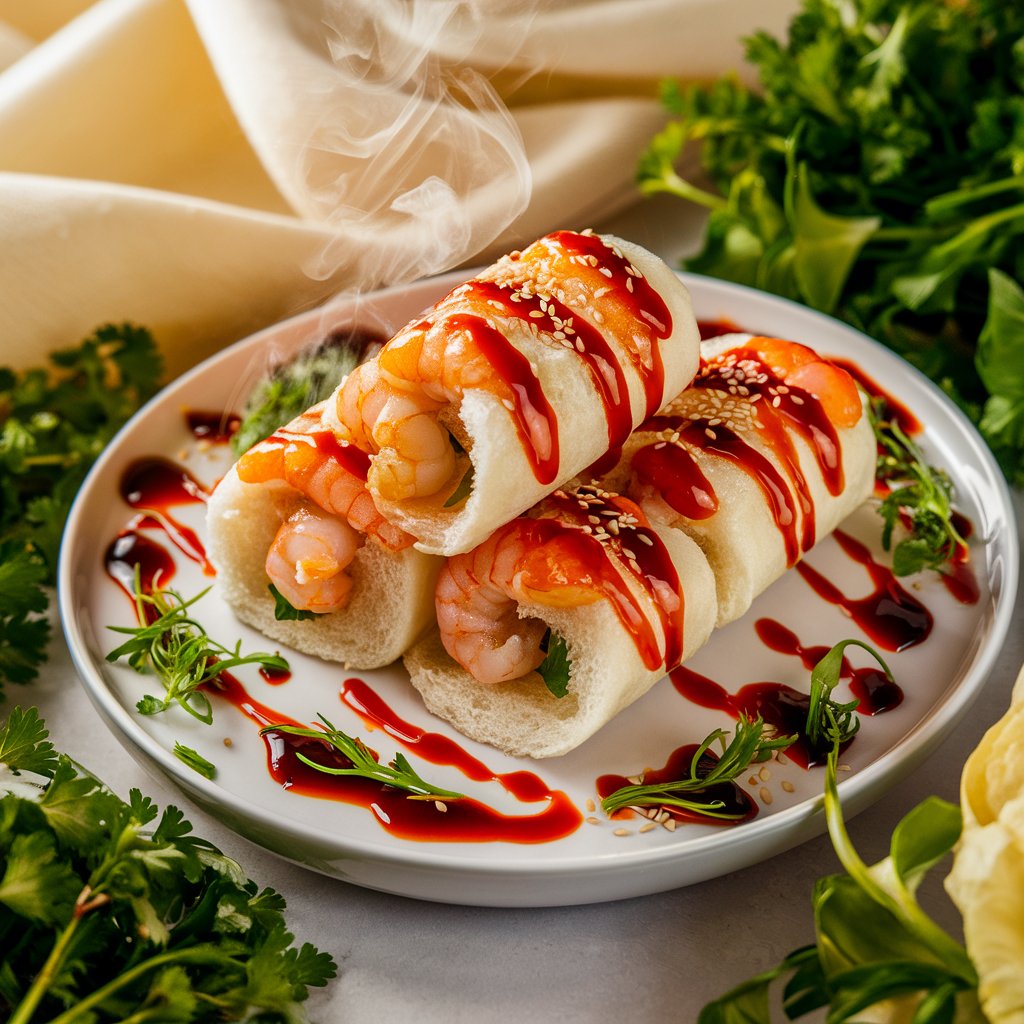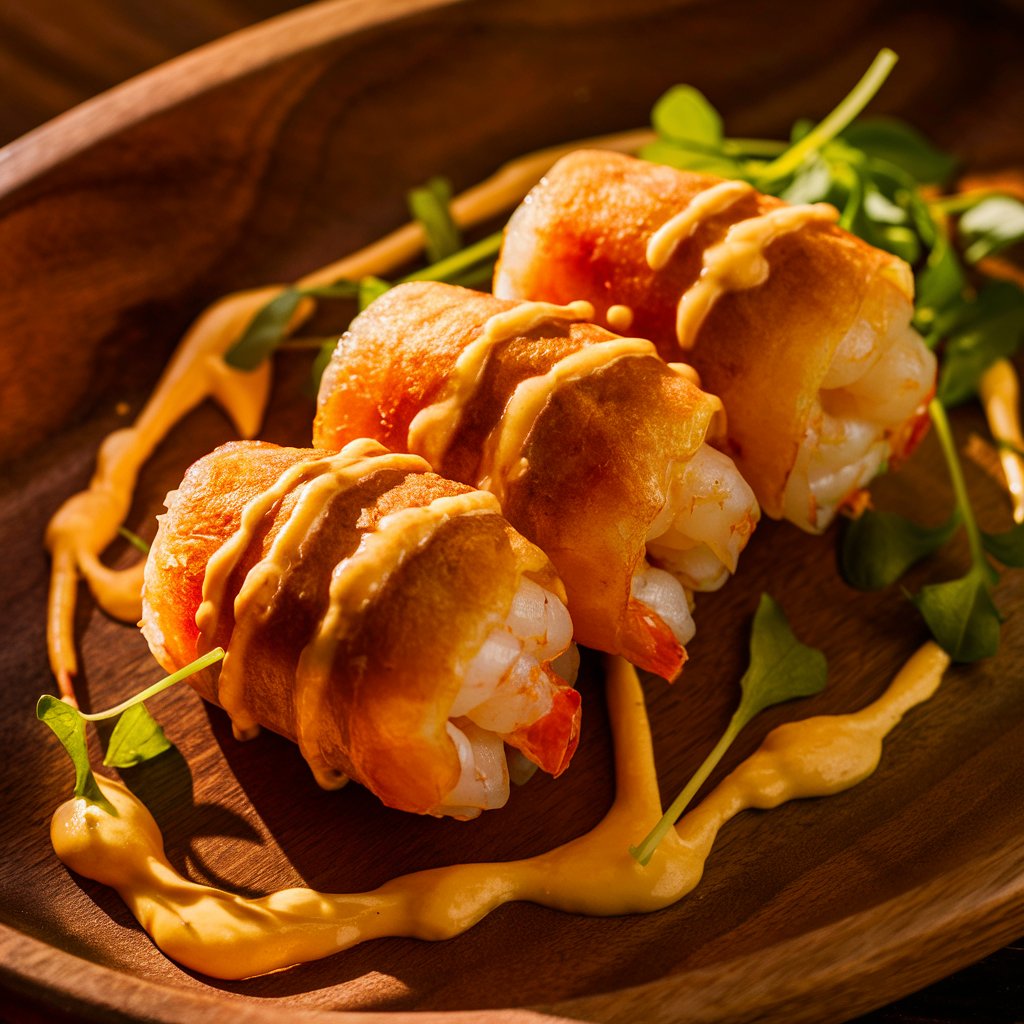What is Spicy Mayo?
Spicy mayo, a beloved condiment in the culinary world, blends creamy mayonnaise with a fiery element like chili paste or hot sauce. It’s versatile, with a smooth texture and bold flavor that enhances various dishes. Its popularity has surged, making it a kitchen staple worldwide.
Culinary Importance of Spicy Mayo
Spicy mayo’s culinary significance lies in its ability to elevate flavors. Whether as a dip, spread, or drizzle, it adds creaminess and heat to dishes. It pairs well with sushi, sandwiches, burgers, fries, and tacos, creating a harmonious balance between creaminess and spice. Its simplicity in preparation makes it accessible to both home cooks and chefs, enhancing dishes effortlessly.
With its bold flavor and widespread appeal, spicy mayo transforms ordinary meals into culinary delights. Whether you’re a spice enthusiast or seeking to add zest to your dishes, spicy mayo promises to tantalize your taste buds and leave you craving more.
Basic Ingredients of Spicy Mayo
Spicy mayo typically consists of two primary ingredients: mayonnaise and a spicy element such as chili paste or hot sauce. The mayonnaise provides a creamy base, while the spicy component adds heat and flavor. Other common ingredients may include garlic, lemon juice, and a dash of salt and pepper to enhance the overall taste. The ratio of mayonnaise to the spicy element can be adjusted according to personal preference, allowing for customization to suit varying spice levels. For a basic guide on creating your condiments, check out our condiment preparation techniques.
Common Variations in Spicy Mayo Recipes
While the basic recipe remains consistent, there are numerous variations of spicy mayo to explore. Some recipes incorporate additional ingredients to enhance flavor and texture. For example, adding minced garlic or grated ginger can impart depth and complexity to the sauce. Similarly, incorporating soy sauce or rice vinegar can introduce a hint of tanginess, balancing the heat with acidity. Additionally, experimenting with different types of chili paste or hot sauce can alter the intensity and flavor profile of the spicy mayo, allowing for endless customization options.
Alternative Ingredients for Dietary Restrictions
For those with dietary restrictions or preferences, there are alternative ingredients that can be used to create a suitable version of spicy mayo. Vegan mayonnaise made from plant-based oils such as soybean or avocado oil can replace traditional mayonnaise, offering a dairy-free and egg-free option. Similarly, gluten-free hot sauces and chili pastes are available for individuals following a gluten-free diet. Additionally, those looking to reduce fat content can opt for low-fat or light mayonnaise varieties without sacrificing flavor. With these alternative ingredients, individuals can enjoy the spicy goodness of mayo while accommodating their dietary needs. history and variations of mayonnaise.
Step-by-Step Guide to Making Spicy Mayo
Making spicy mayo is a straightforward process that requires minimal time and effort. Here’s a simple step-by-step guide to creating this flavorful condiment:
- Gather Your Ingredients: You’ll need mayonnaise, a spicy element like chili paste or hot sauce, and any additional flavorings like garlic or lemon juice.
- Mix Ingredients: In a small bowl, combine mayonnaise and your chosen spicy element in a ratio that suits your desired level of heat. Start with a small amount of the spicy element and gradually add more to taste.
- Add Flavorings: Still, add diced garlic, grated gusto, If asked . Mix well to insure all constituents are unevenly distributed.
- Adjust Consistency: If the spicy mayo is too thick, you can thin it out with a splash of water or lemon juice. Conversely, if it’s too thin, you can thicken it by adding more mayonnaise.
- Taste and Adjust: Once everything is mixed together, taste the spicy mayo and adjust the seasoning as needed. You can add more salt, pepper, or additional spicy element to suit your preferences.
- Refrigerate: Transfer the racy mayo to an watertight vessel and chill for at least 30 twinkles before serving. This allows the flavors to immingle together and consolidate.
- Serve and Enjoy: Spicy mayo is ready to be enjoyed as a dipping sauce, spread, or topping for your favorite dishes. It pairs well with sushi, sandwiches, fries, and more.
Tips for Perfecting Spicy Mayo
- Start with a small amount of the spicy element and gradually add more to control the level of heat.
- Experiment with different types of chili paste or hot sauce to find your preferred flavor profile.
- Incorporate additional flavorings like garlic, ginger, or citrus juice to enhance the taste of the spicy mayo.
- Adjust the consistency by adding water or lemon juice if it’s too thick, or more mayonnaise if it’s too thin.
- Refrigerate the spicy mayo for at least 30 minutes before serving to allow the flavors to develop.
Common Mistakes to Avoid
- Adding too much spicy element at once, resulting in an overly spicy mayo.
- Overmixing the ingredients, which can cause the mayo to become too thin or lose its creamy texture.
- Forgetting to taste and adjust the seasoning before serving, leading to bland or unbalanced flavors.
- Not refrigerating the spicy mayo before serving, which can prevent the flavors from fully developing.
- Storing the spicy mayo in a warm environment, which can cause it to spoil quickly. Always store it in the refrigerator to maintain freshness.

Nutritional Information
Caloric Content of Spicy Mayo
The caloric content of spicy mayo can vary depending on the ingredients used and the serving size. Generally, a tablespoon-sized serving of spicy mayo contains approximately 90-100 calories. The primary contributors to the calorie count are the mayonnaise, which is rich in fats, and any added flavorings or spicy elements.
Health Considerations
While racy mayo can be a luscious addition to refections, it’s essential to consider its nutritional profile and health implications. also are some pivotal points to keep in mind:
- High in Calories: Spicy mayo is calorie-dense due to its mayonnaise base, which is high in fats. Consuming large amounts of spicy mayo regularly can contribute to calorie intake and potentially lead to weight gain if not balanced with a healthy diet and exercise.
- High in Fats: Mayonnaise, the primary ingredient in spicy mayo, is rich in fats, particularly saturated fats. While fats are essential for a balanced diet, excessive intake of saturated fats can increase the risk of heart disease and other health issues. Opting for light or low-fat mayonnaise varieties can help reduce the fat content of spicy mayo.
- Moderate Consumption: Enjoy spicy mayo in moderation as part of a balanced diet. Use it as a condiment or topping rather than a main component of meals to control calorie and fat intake.
- Alternative Options: For those looking to reduce calories or fats, there are alternative options available. Consider using light or low-fat mayonnaise, or explore homemade recipes using Greek yogurt or avocado as a base for a healthier alternative to traditional spicy mayo.
- Dietary Restrictions: Individuals with dietary restrictions or health conditions should be mindful of the ingredients used in spicy mayo. Choose gluten-free, vegan, or dairy-free options as needed to accommodate specific dietary needs.
Overall, while spicy mayo can be a delicious addition to dishes, it’s essential to consume it in moderation and consider its nutritional content as part of a balanced diet. Making mindful choices and opting for healthier alternatives can help you enjoy the flavors of spicy mayo while maintaining your overall health and well-being.
Popular Dishes Featuring Spicy Mayo
Spicy mayo’s versatility makes it a popular condiment in a wide range of dishes. Here are some popular culinary creations that feature spicy mayo:
- Sushi Rolls: Spicy mayo is a common accompaniment to sushi rolls, adding a creamy and spicy element to the seafood filling. It’s often drizzled on top of rolls like spicy tuna or spicy salmon for an extra burst of flavor.
- Burgers and Sandwiches: Spicy mayo can take burgers and sandwiches to the next level by adding a creamy and spicy kick. It’s delicious spread on burger buns or sandwich bread, or used as a dipping sauce for fries or onion rings.
- Tacos and Wraps: Tacos and wraps benefit from the addition of spicy mayo, which adds depth of flavor and a creamy texture. It pairs well with ingredients like grilled chicken, shrimp, or tofu, enhancing the overall taste experience.
- Salads and Bowls: Spicy mayo can be used as a dressing or drizzle for salads and grain bowls, adding a burst of flavor and creaminess. It’s particularly delicious when paired with ingredients like avocado, roasted vegetables, or crispy tofu.
- Seafood Dishes: Spicy mayo complements a variety of seafood dishes, from grilled fish to shrimp skewers. It can be used as a dipping sauce for seafood appetizers or as a sauce for seafood tacos or sushi rolls.
Creative Ways to Use Spicy Mayo in Everyday Cooking
Beyond traditional dishes, there are innumerous creative ways to incorporate racy mayo into everyday cuisine. Then are some ideas to inspire your culinary creations:
- Spicy Mayo Dip: Whip up a quick and easy spicy mayo dip by mixing spicy mayo with sour cream or Greek yogurt. Serve with vegetable sticks, crackers, or chips for a flavorful snack or appetizer.
- Spicy Mayo Marinade: Use spicy mayo as a marinade for chicken, fish, or tofu before grilling or baking. The creamy texture helps to tenderize the protein while infusing it with flavor.
- Spicy Mayo Dressing: Create a creamy dressing for salads by thinning out spicy mayo with a bit of water or citrus juice. Add herbs and spices to customize the flavor to your liking.
- Spicy Mayo Drizzle: Elevate roasted vegetables, grilled meats, or rice bowls by drizzling them with spicy mayo before serving. The creamy texture and spicy flavor will take your dishes to the next level.
- Spicy Mayo Aioli: Transform spicy mayo into a gourmet aioli by adding minced garlic, lemon juice, and herbs like parsley or dill. Use it as a dipping sauce for fries, a spread for sandwiches, or a topping for grilled meats.
With its bold flavor and creamy texture, spicy mayo adds a delicious kick to a wide range of dishes and offers endless opportunities for culinary creativity. Whether used as a dip, dressing, marinade, or drizzle, spicy mayo is sure to spice up your meals and delight your taste buds. Incorporate spicy mayo into your salads or as a spread on wraps for an extra flavor kick. For more creative culinary ideas, check out innovative cooking techniques.
Origins of Spicy Mayo
The origins of spicy mayo are somewhat ambiguous, with its exact birthplace not definitively documented. However, it is widely believed to have originated in Japan, where it is known as “karashi mayo.” Karashi mayo combines mayonnaise with karashi, a type of Japanese mustard, to create a creamy and tangy condiment with a subtle heat. Over time, variations of spicy mayo emerged, incorporating different spicy elements such as chili paste or hot sauce, depending on regional preferences and culinary innovations.
Spicy Mayo in Different Cuisines
Spicy mayo has transcended cultural boundaries and found its way into various cuisines around the world. While its roots may lie in Japanese cuisine, it has become a versatile condiment used in a wide range of dishes across different cultures.
- Japanese Cuisine: In Japan, spicy mayo is commonly used as a topping for sushi rolls, particularly those with seafood fillings like tuna or salmon. It adds a creamy and spicy element that enhances the overall flavor profile of the sushi.
- American Cuisine: In the United States, spicy mayo has gained popularity as a condiment for burgers, sandwiches, and wraps. It adds a zesty kick to classic American dishes and has become a staple in many restaurants and fast-food chains.
- Latin American Cuisine: In Latin American cuisine, spicy mayo is often used as a dipping sauce for appetizers like empanadas or as a topping for tacos and burritos. Its creamy texture and spicy flavor complement the bold and vibrant flavors of Latin American dishes.
- Asian Fusion Cuisine: Spicy mayo has become a hallmark of Asian fusion cuisine, where it is used in creative and innovative ways to add flavor and flair to dishes. It can be found in dishes like Korean-inspired tacos, Vietnamese banh mi sandwiches, and Thai-inspired rice bowls.
Overall, spicy mayo’s cultural significance lies in its ability to bridge culinary traditions and bring together diverse flavors and ingredients. Whether enjoyed in traditional Japanese sushi rolls or as a trendy topping for American burgers, spicy mayo continues to captivate taste buds and add a spicy twist to dishes around the world.

FAQs
What are the key ingredients in spicy mayo?
The key ingredients in spicy mayo typically include mayonnaise and a spicy element such as chili paste or hot sauce. Mayonnaise provides a creamy base, while the spicy component adds heat and flavor. Additional ingredients may include garlic, lemon juice, and salt and pepper to taste.
Can I make spicy mayo if I’m allergic to eggs?
Yes, individuals with egg allergies can still enjoy spicy mayo by using alternative ingredients to replace the mayonnaise. Vegan mayonnaise made from plant-based oils such as soybean or avocado oil can be used as a substitute. These alternatives offer a dairy-free and egg-free option for those with dietary restrictions.
How long can I store homemade spicy mayo?
It’s important to keep the spicy mayo refrigerated to maintain freshness and prevent spoilage. Before consuming, always check for any signs of spoilage such as unusual odor, appearance, or texture, and discard if any are present.










